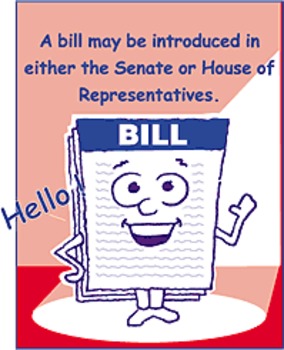The mark up of a bill refers to the process of making changes or amendments to a proposed legislation before it is voted on by a legislative body. This process involves reviewing, modifying, and refining the bill to ensure that it meets the goals and intentions of the lawmakers. Marking up a bill is an important step in the legislative process as it allows legislators to craft laws that are well-informed, effective, and reflective of the needs and concerns of the people they represent.
The Purpose of Marking Up a Bill
Marking up a bill serves several purposes. First and foremost, it allows legislators to thoroughly examine the proposed legislation and consider its implications. By reviewing each provision and section of a bill, lawmakers can identify potential issues, inconsistencies, or unintended consequences. This process ensures that the bill is well-drafted and avoids any ambiguities that may lead to misinterpretation or legal challenges.
Secondly, marking up a bill is an opportunity for lawmakers to introduce changes and amendments that they believe will strengthen the legislation. This can involve adding new provisions, clarifying language, or deleting sections that are deemed unnecessary or problematic. Through this process, lawmakers can shape the bill to better address the concerns of their constituents and reflect their policy priorities.
Moreover, marking up a bill allows for collaboration and negotiation among legislators. In a diverse legislative body, there are often differing perspectives and priorities. Marking up a bill enables lawmakers to engage in discussions, debate the merits of proposed changes, and seek consensus. This collaborative process ensures that a wider range of perspectives and expertise are considered, resulting in more robust and balanced legislation.
How Marking Up a Bill Works
The process of marking up a bill typically takes place in a committee or subcommittee setting. These committees, composed of legislators with specific subject matter expertise, are responsible for reviewing bills that fall within their jurisdiction. During the markup session, committee members propose changes to the bill and discuss their merits. These changes can range from minor technical adjustments to substantial revisions.
Committee members may offer amendments to the bill through written proposals. These amendments are then debated, possibly modified further, and eventually voted on by the committee. The outcome of the vote determines whether the proposed amendment is accepted or rejected. Accepted amendments become part of the final version of the bill that will be considered by the full legislative body.
It is worth noting that the markup process can be time-consuming and complex, especially for significant and controversial legislation. Multiple rounds of markup may be required, particularly when there is strong disagreement among committee members. Additionally, stakeholders and interest groups may have the opportunity to provide input during this process, further shaping the bill’s content.
Ensuring Transparency and Accountability
Transparency and accountability are vital in the legislative process, and marking up a bill is no exception. To promote transparency, many legislatures require that markup sessions be open to the public, allowing citizens, the media, and other interested parties to observe the process. This transparency ensures that the deliberations and decisions made during the markup are accessible and that the public can better understand how laws are formed.
Accountability is achieved through the recording and publication of the markup proceedings. These records serve as an official record of the changes made to the bill and the rationale behind those changes. By documenting the markup process, lawmakers can be held accountable for the decisions they make and can justify their actions to their constituents.
Frequently Asked Questions
What happens after a bill is marked up?
After a bill is marked up in committee, it is typically voted on by the committee members. If the markup is successful, meaning that the committee approves the bill with the proposed changes, it moves on to the next stage in the legislative process. This may involve further debate and amendments in the full legislative body, such as the House of Representatives or the Senate. Ultimately, the bill must be passed by both chambers and signed into law by the executive branch to become law.
Can amendments be made during floor debate?
Yes, amendments can be made during floor debate. When a bill reaches the full legislative body, such as the House of Representatives or the Senate, it is open to further amendments and changes. Lawmakers can propose new amendments or offer modifications to existing amendments during the floor debate. This allows for further refining and shaping of the bill before it comes up for a final vote.
What happens if there is disagreement on proposed amendments?
Disagreement on proposed amendments is common in the legislative process. If there is disagreement on a proposed amendment during the markup or floor debate, further discussion and negotiation may take place. Lawmakers can engage in debate, present arguments for or against the proposed amendment, and seek compromise. In some cases, a vote may be taken to determine whether the amendment should be included in the bill. The outcome of the vote determines whether the amendment is accepted or rejected.
Final Thoughts
The mark up of a bill is a crucial step in the legislative process. It allows lawmakers to thoroughly examine proposed legislation, introduce changes and amendments, and shape laws that better reflect the needs and concerns of society. While the markup process can be complex and time-consuming, it serves as a mechanism for transparency, accountability, and collaboration. Through marking up bills, legislators fulfill their role as representatives, ensuring that laws are effective, well-informed, and responsive to the challenges and opportunities of the times.
